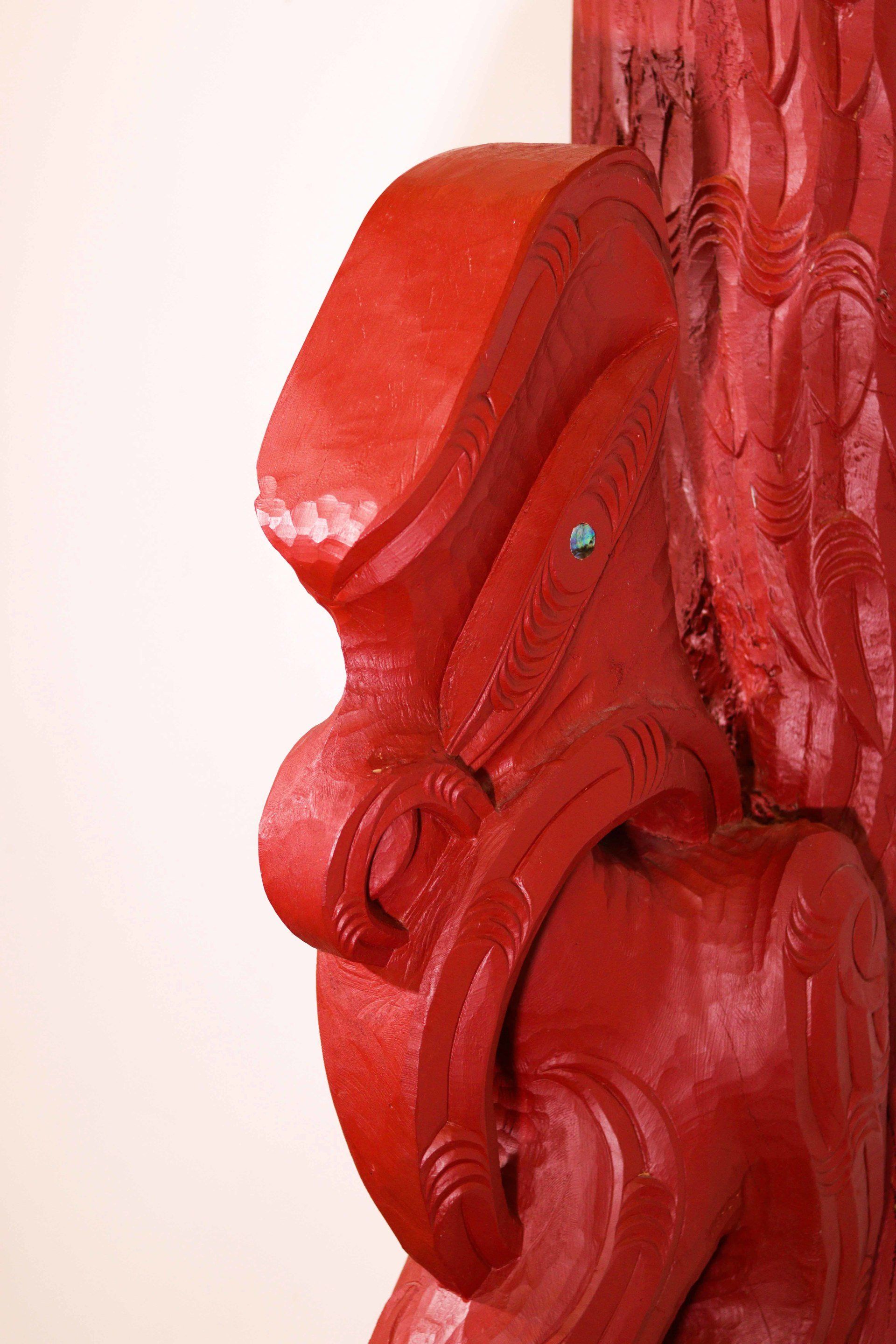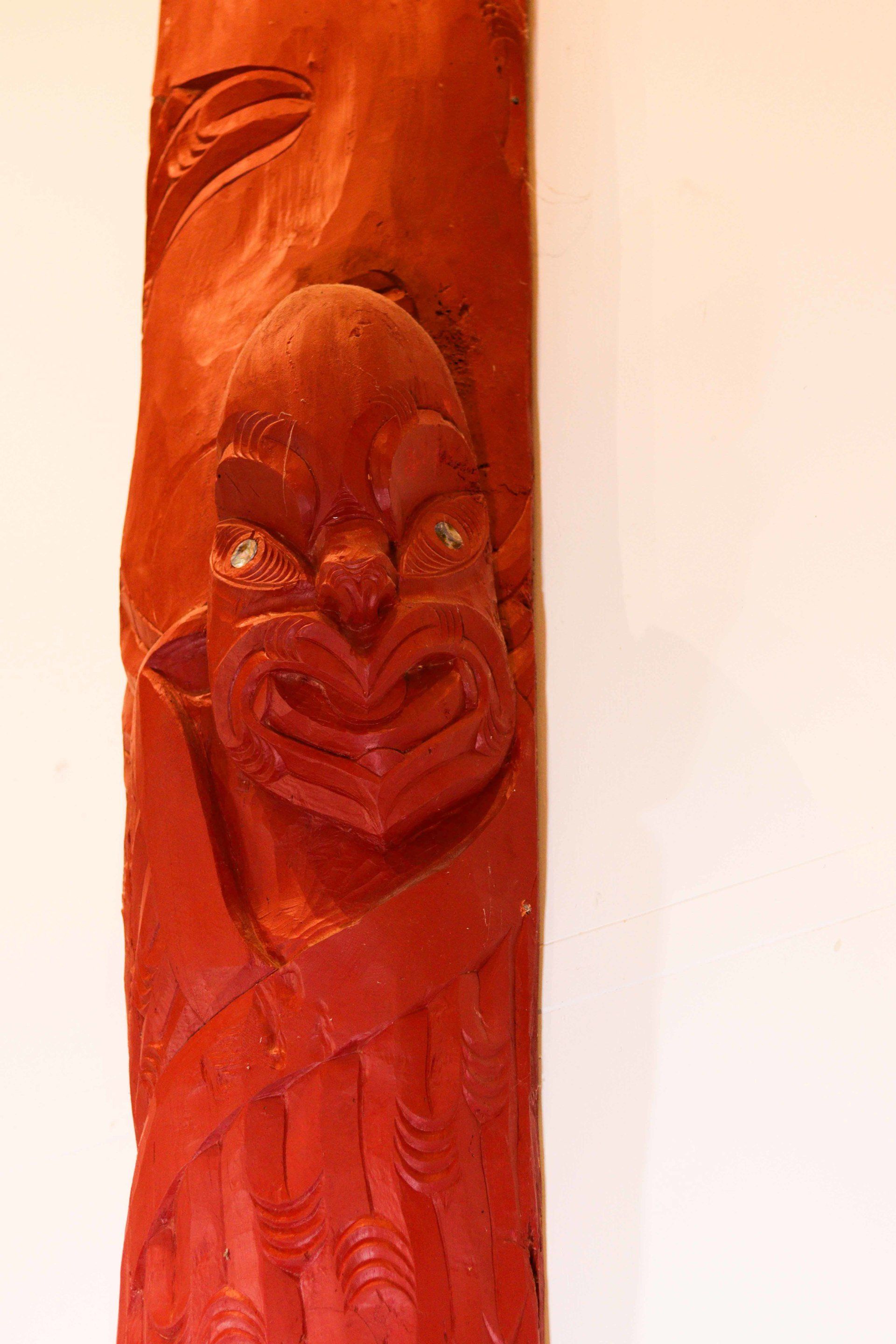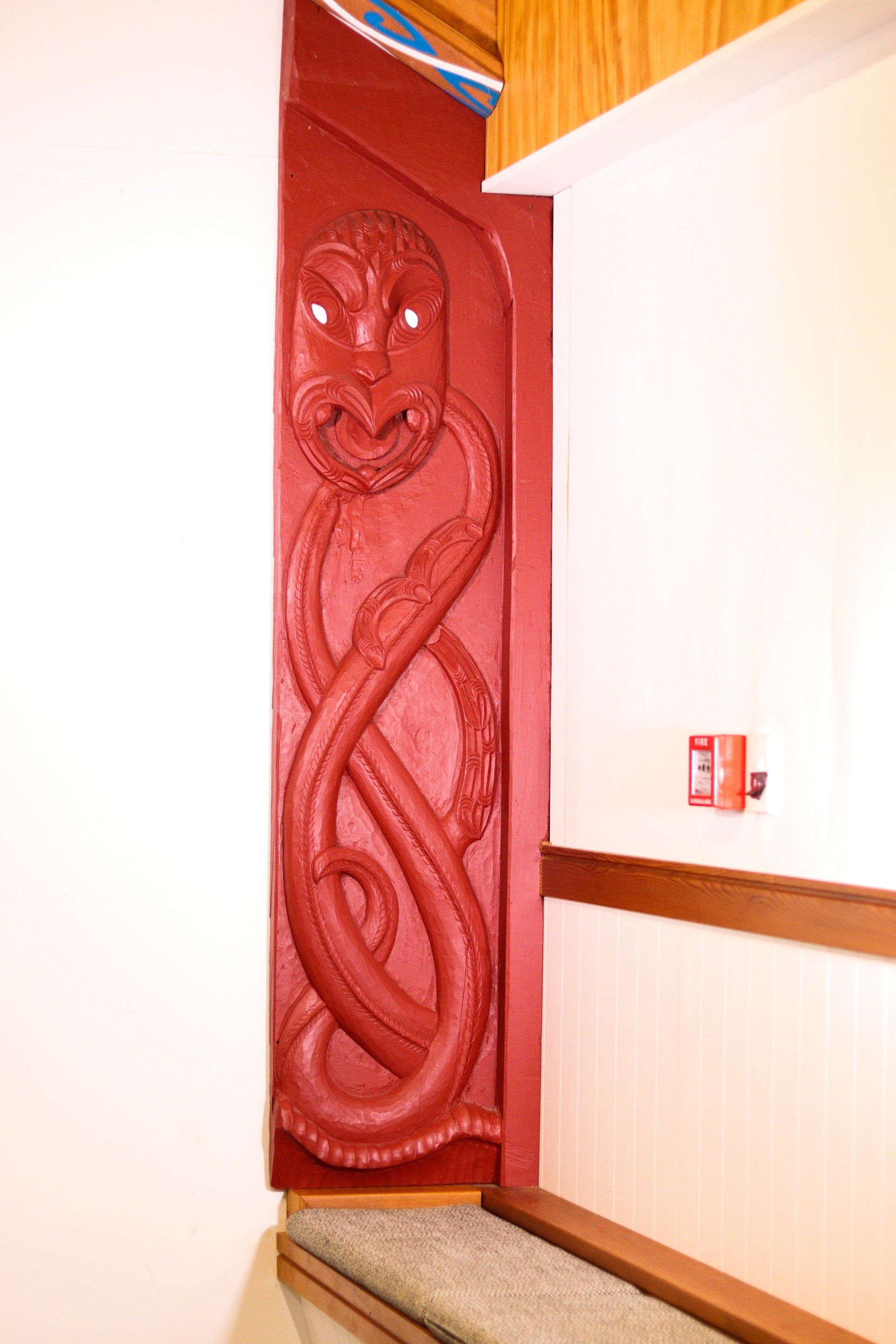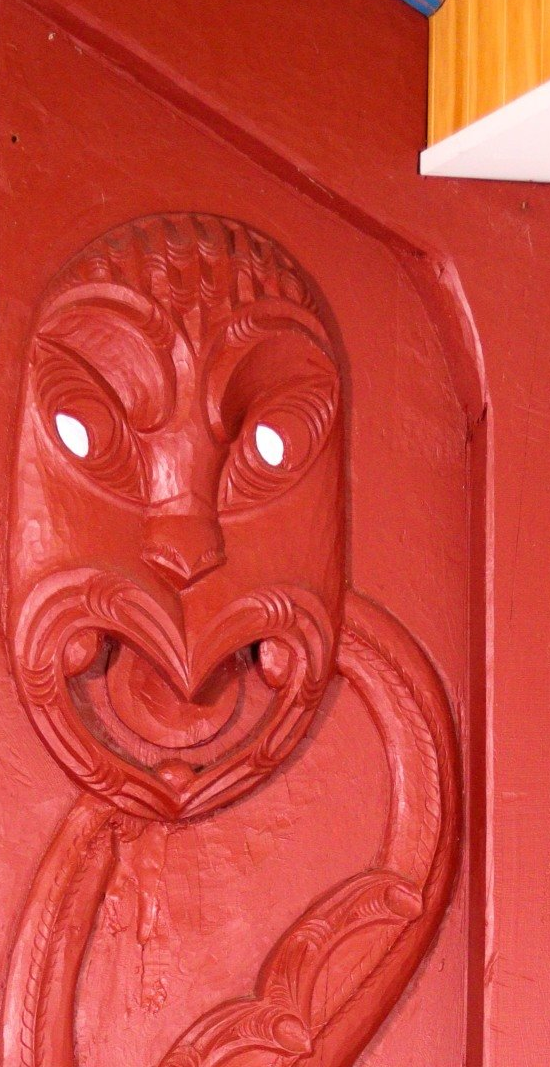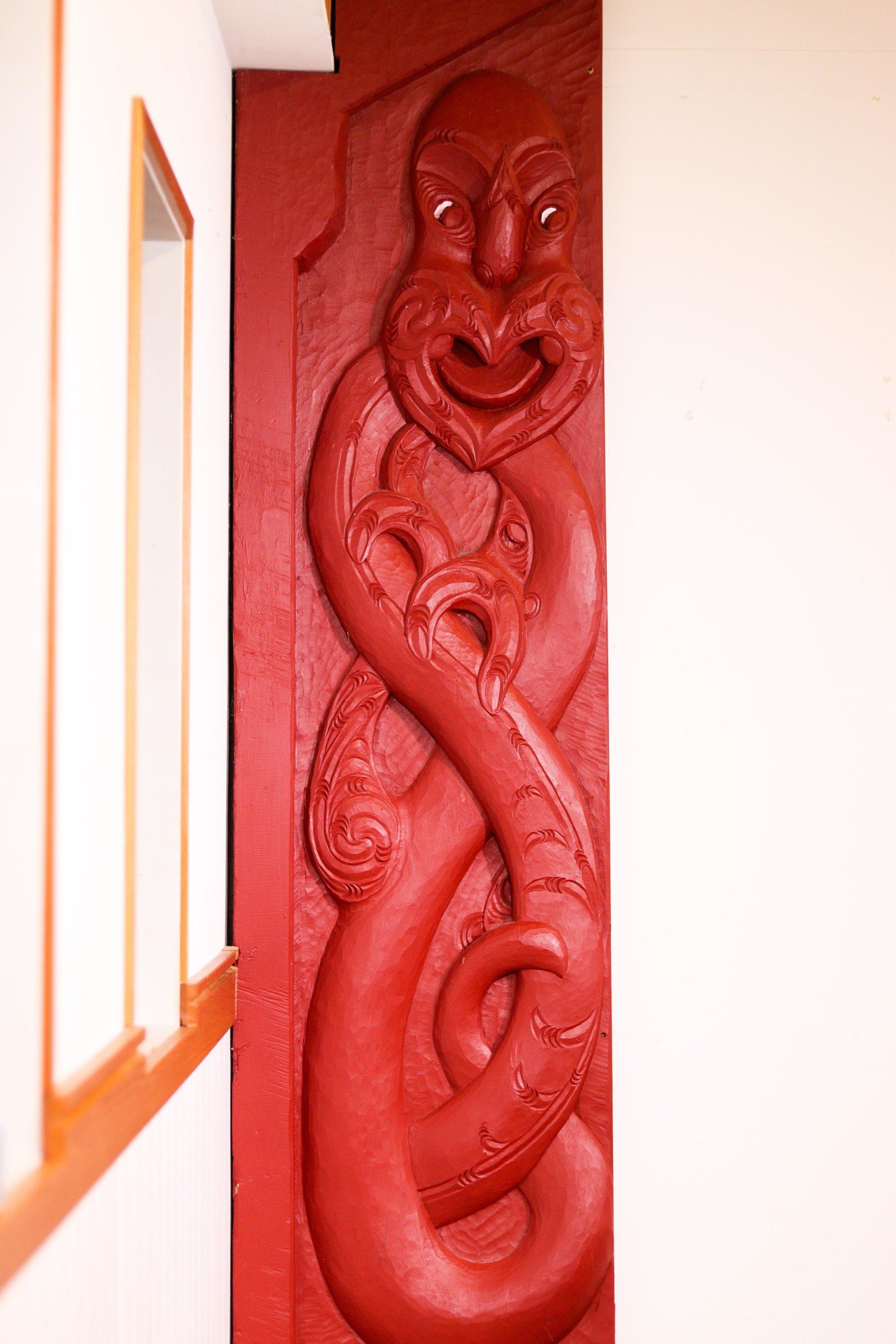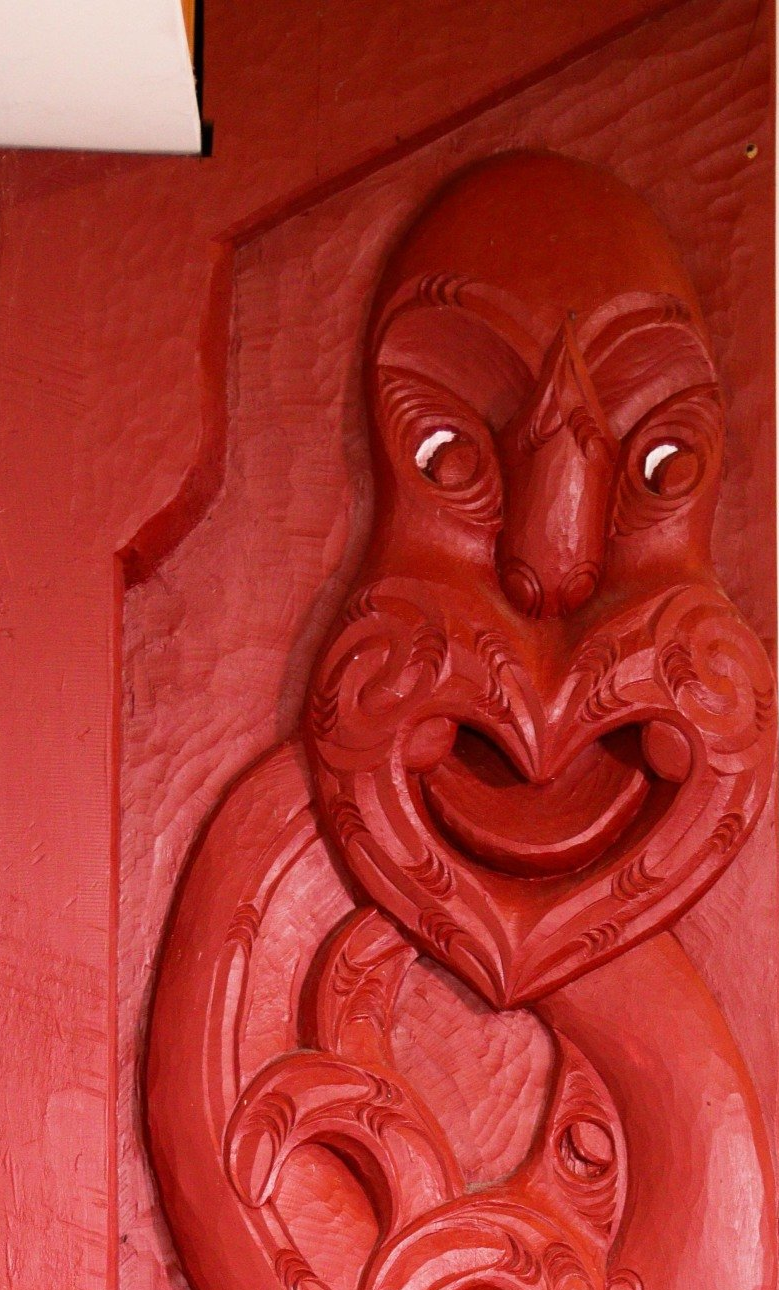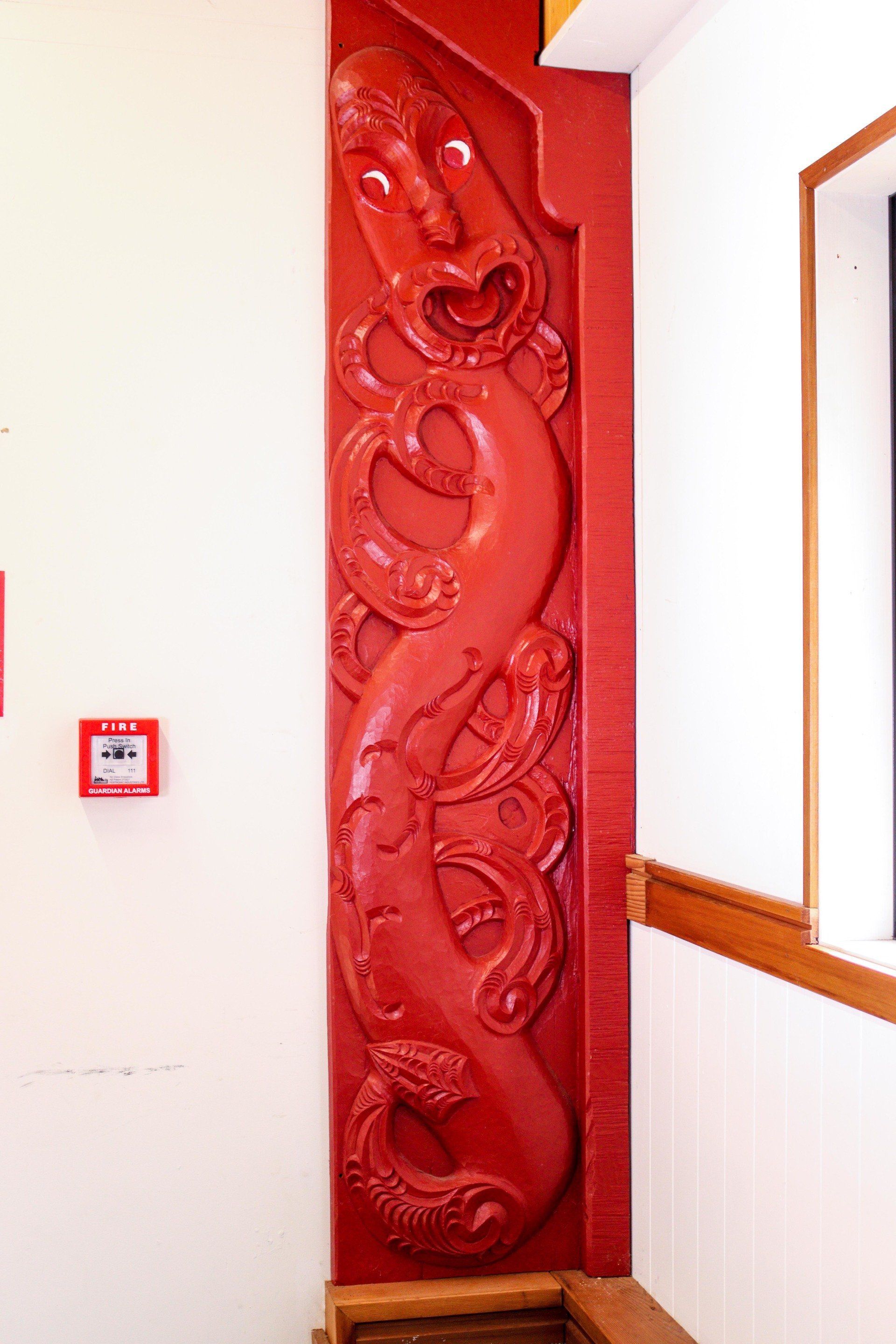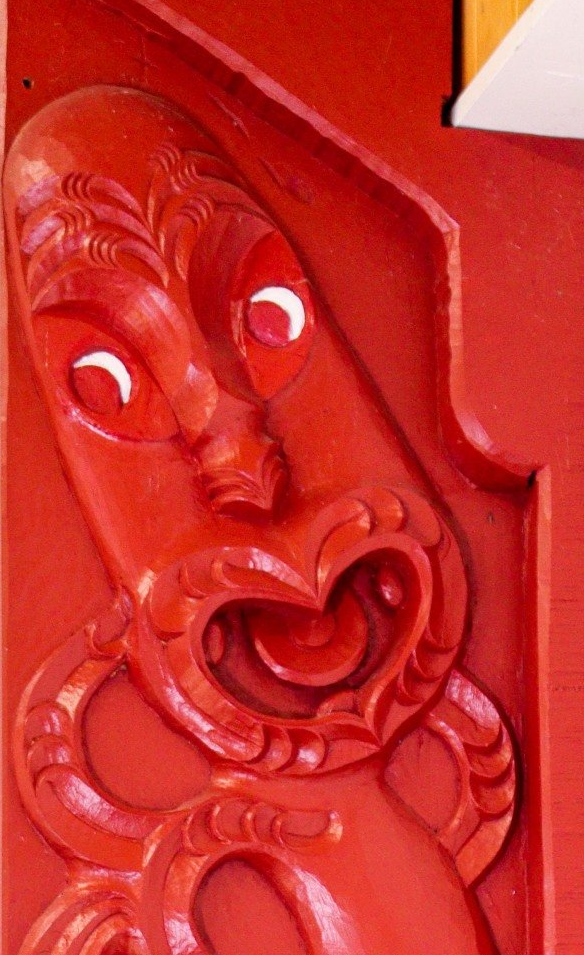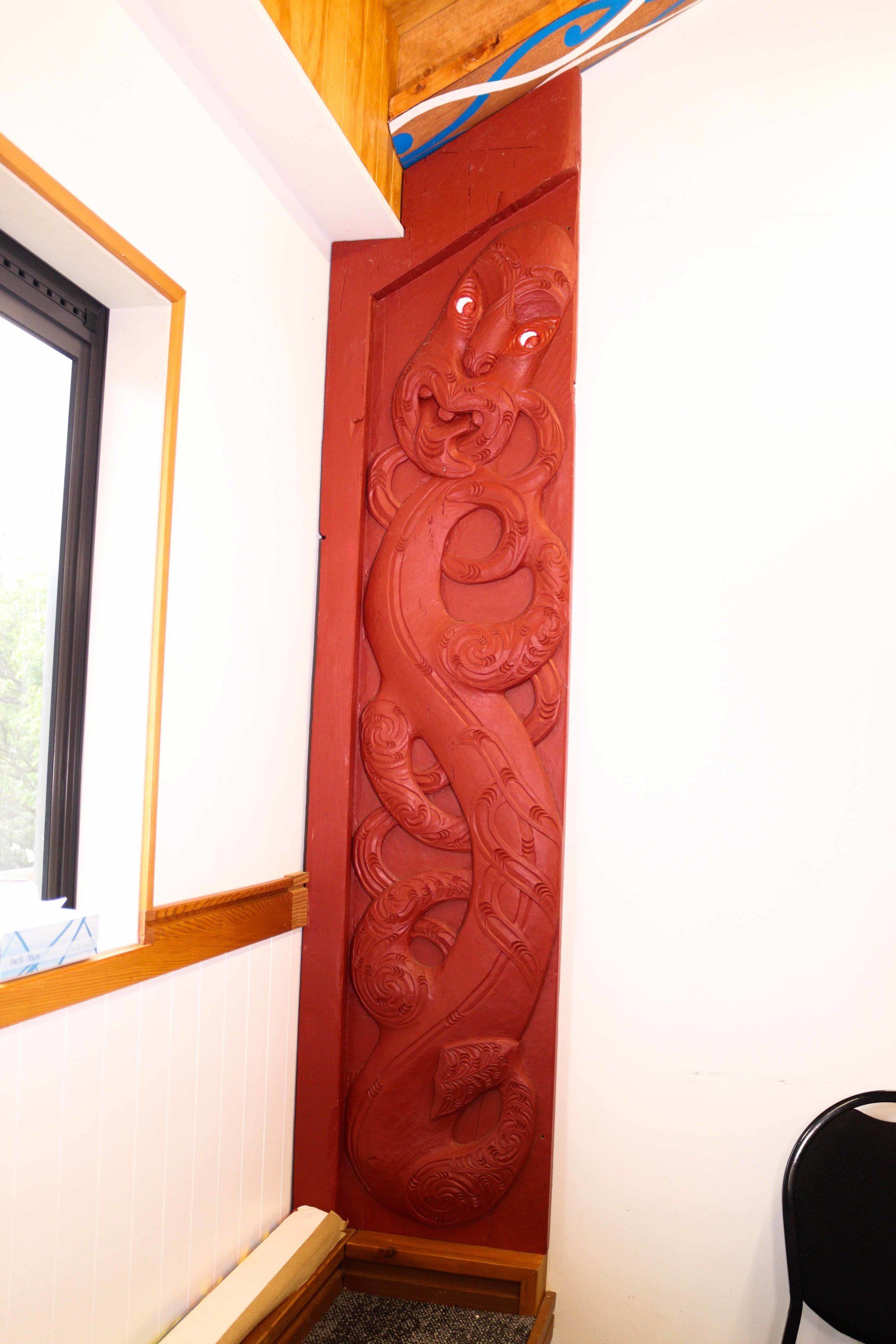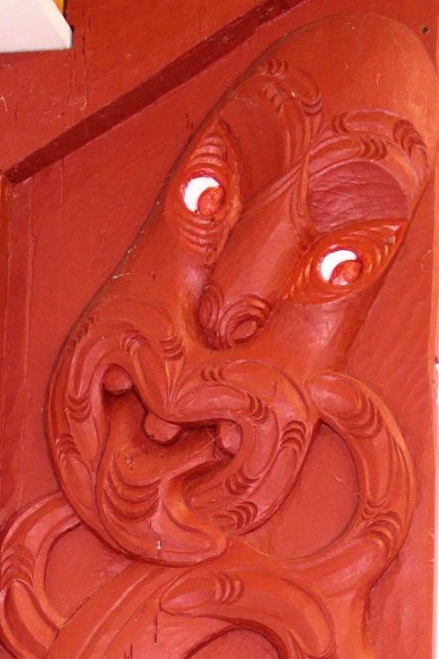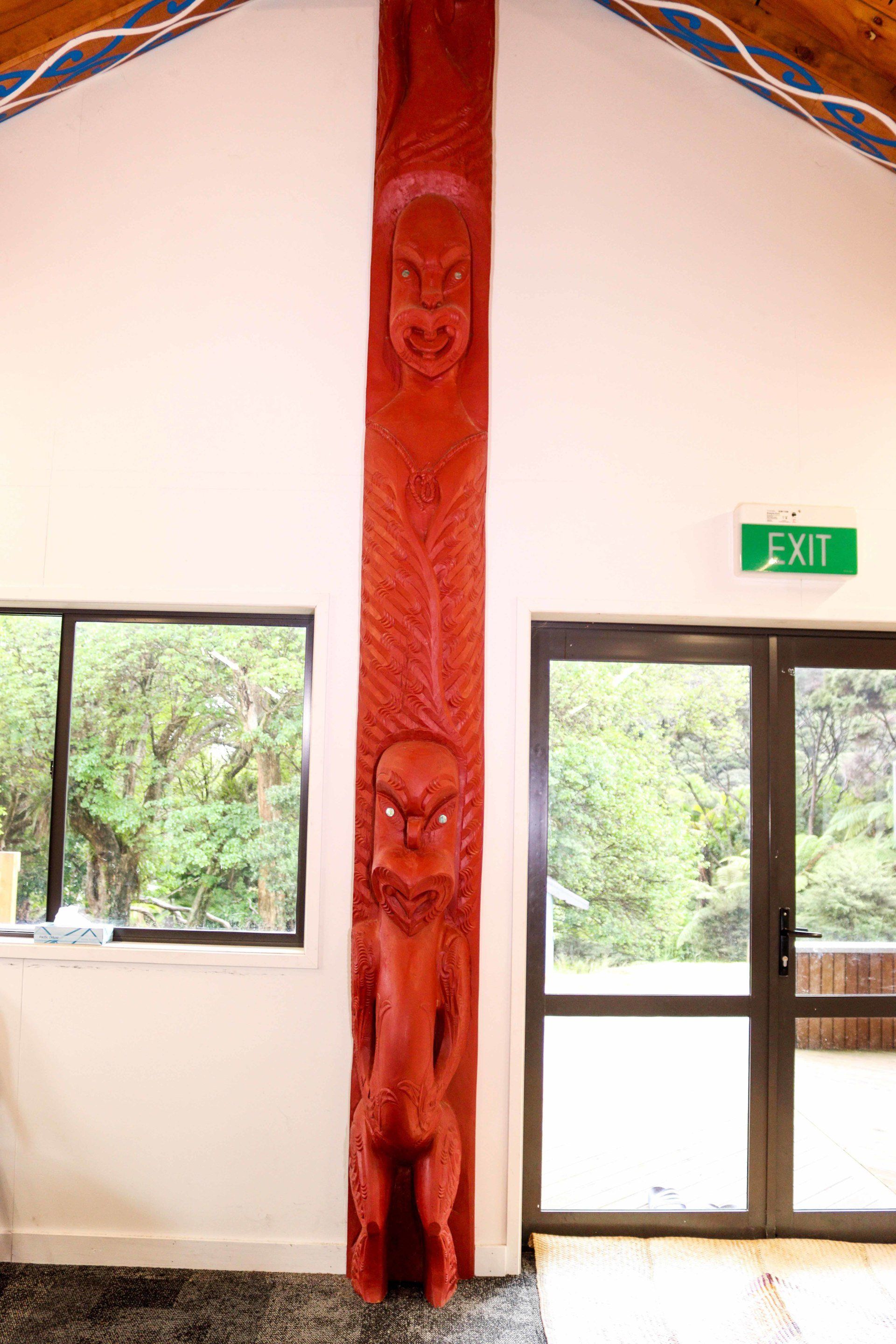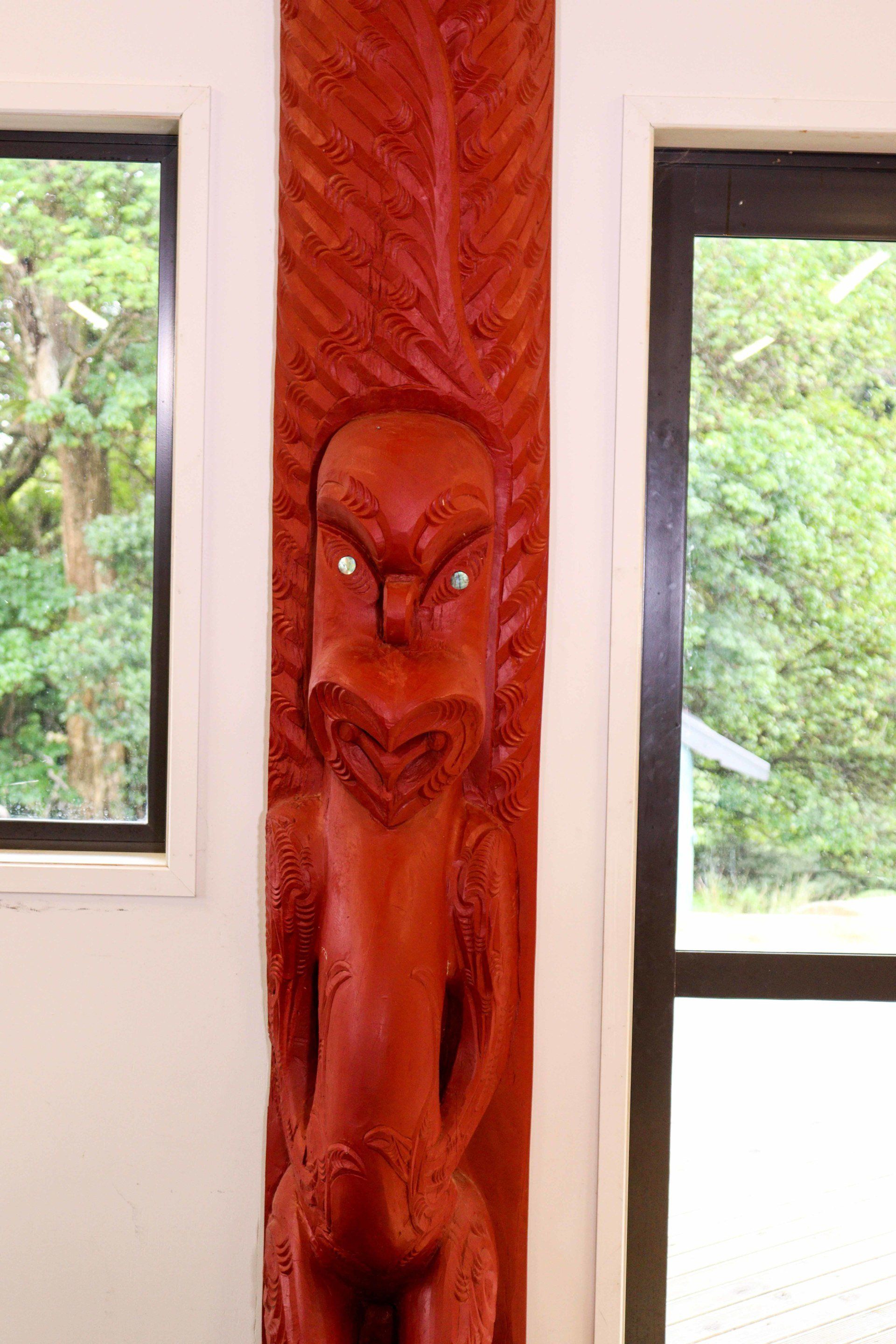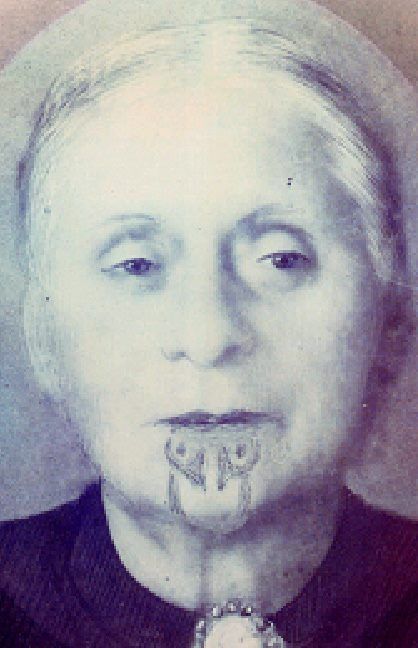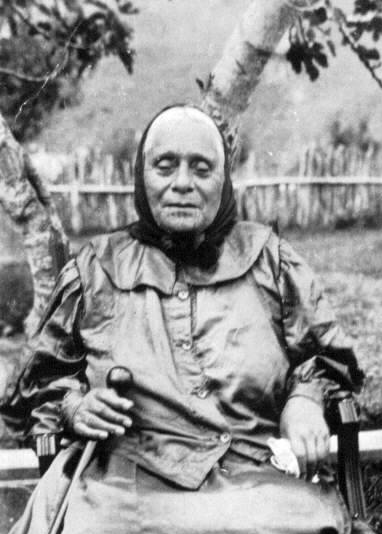Whare Tupuna Pou
DOWNLOAD POWERPOINTRehua
Te Pou o te Kōruru – Ko Rehua (Top highest point)
Te Pou o te Kōruru – Ko Mataahu (Below Rehua) Nga Maihi - Tukaiaia (Either side of Mataahu)
Nga Maihi - Tuatara Whatumanawa (Both sides of Apex)
Te Pou o tenei Amo, Ko Te Rangituangahu (Left side)
Te Pou o tenei Amo, Ko Te Ikamimirua (Right side)
For more information see the powerpoint slide below for full descriptions and Whakapapa, for your reference.
Te Poutokomanawa, ko tenei te pou o Te Rangituangahuru
He is identified as “Te Rangitūangahuru te tangata” (Te Rangituangahuru the Great Leader). After their first conquest or raupatu in the Northern end of Aotea, It is fair to say that it was to be the the beginning of securing a conquering stronghold on Aotea.
After the death of his father Rēhua, Te Rangitūangahuru began a series of battles that over time ended up with Te Rangituangahuru becoming the absolute Ariki on Aotea, finally defeating Ngāti Te Whārau and Ngati Tai claiming outright raupatu of all of Aotea.
This is Ariki Te Rangituangahuru. He is wearing a cloak or kakahu. As he went through a series of these battles conquering Aotea, progressive spreading of his mana and influence the name of this whawhai was called 'Te Kahukura o Te Rangituangahuru' the 2nd phase of conquest or raupatu of Aotea. This was his revenge for the murder of his father Rehua. He now had total rights and Ārikitanga over Aotea
•Death of Rehua
•2nd Raupatu phase
•Ngāti Rehua, Ngatiwai ki Aotea full Manawhenua rights to the present
HINE-NUI-TE-PO
Hine-ahu-one She was the first woman created by Tane. They had a daughter named Hine Titama and she was the daughter of Tane Mahuta and Hine-ahu-one. Hine Titama finally married Tane and had several children and she was very happy. She eventually asked her husband Tane who was her Father. Tane Mahuta told her and when you look at the pou in the wharenui. Hine Tītama was overcome when she discovered that her husband was actually her father. After deep thought she told Tane that she would leave their children in his care during their stay on papatuanuku. As they each left the earth she would receive them in the underworld. Her name then changed to Hine-nui-te-po the goddess of death, the guardian of spirits who take their final travel to Te Reinga wairua.
MAKI
Maki acknowledges our whakapapa links to Te Kawerau, Waiohua and Ngati Manuhiri. Maki was born in Kawhia, he is the tuakana to Mataahu, Rehua’s father.
Tainui te waka, Maki is the eponymous ancestor of the Iwi Kawerau-ā-Maki. Maki is an important figure in the history of Tamaki Makaurau.
He and his brother Mataahu are famed warriors who conquered much of the Tamaki region during the early 1600’s.
Maki had 4 sons Manuhiri, Maraeariki, Ngawhetu and Tawhia-ki-te-Rangi.
TOI-TE-HUATAHI
Location inside front door to far right corner
Te Paepae-ki-Rarotonga was the canoe of Toi-te-huatahi, also known as Toi-kai-rakau a most influential chief who lived in Hawaiki. Toi travelled the pacific in search of his grandson Whatonga who was lost in a race through a bad storm bring him to Aotearoa. Significant areas surrounding Aotea bear the name of Toi as follows
Te Hauturu o Toi, Little Barrier is likened to a massive whai or stingray, as it stands guard over the seas that lie between Aotea and the lands of the Ngati Manuhiri at Omaha and Pakiri.
In Te Moana nui o Toi lies many motu referred to as Nga Poito o te Kupeuga o Toi te huatahi ie 'the floats of the fishing net of Toi te huatahi'. This ancient name is referred to in the waiata oriori that was recited by tupuna, Hone Puumare Paama, at the Hauturu investigation over a century ago. Me piki taua ki te tihi O Hauturu muia ao ki nga poito o te kupenga O Toi te huatahi. E tama tangi kine e E tama tangi kine e E tama tangi kine e.
MANAIA
Location Manaia inside front door on the left (Taumata)
This pou acknowledges our strong Ngati Manaia/Ngātiwai whakapapa inks. One of the oldest Iwi Manaia came to Aotearoa on the canoe Mahuhu-Ki-Te-Rangi. He occupied the northern part of the Ngatiwai rohe from Rakaumangamanga, Whangarei Harbour to Whangaporoa. While the strategic marriage between Hinuere of Ngāti Manaia and Rehua of Kawerau-ā-Maki initiated the first discussion with Te Whaiti of Mimiwhangata of support for utu on Aotea. It was the long standing ties between Ngatiwai (Te Whaiti, Te Awe, Ranginui) and Ngāti Rēhua.
MATAA
Mataa was the resident Āriki for Ngāti Tai, Ngāti Taimanawa before Rehua’s first arrival on Aotea.
At the request of Te Whaiti to Rēhua’s wife who was a relation to Hinurere he asked for support to utu the death of his daughter Te Koro. Rehua with his son travelled to Aotea to meet up with Te Whaiti and his son Te Awe. They battled with Ngāti Tai, Ngāti Taimanwa. In order to bring an end to the battle, Mataa negoiated an alliance marriage by giving his sister, Waipahihi as a 2nd wife to Rehua. Thereby sealing the end of the 1st raupatu.
Raihi Miraka
Front Centre wall - Top Pou
Raihi Miraka Nohomutu Kewene, Ngawaka, Reweti.
acknowledges our whakapapa links to Ngati Porou
Raihi’s father Kewene Tama Kotere is from the Iwi Ngāti Porou, his hapu is Iritekura .She had thirteen children. (6) to her 1st husband Ngawaka, Ngati Kuta hapu from Te Rawhiti of Ngatiwai descent. She had (7) to her 2nd husband, Ngaronui Kino Davis.
Because she had fair skin it was believed she was a descendant of the Patupairehe that lived on island centuries before. Nohomutu means to be left behind or put out on the outer reaches of her father's domain She is the only female Ariki (2nd to last) on Aotea.

